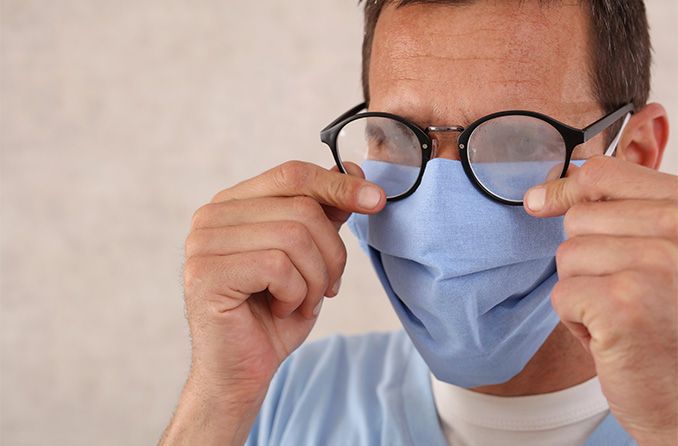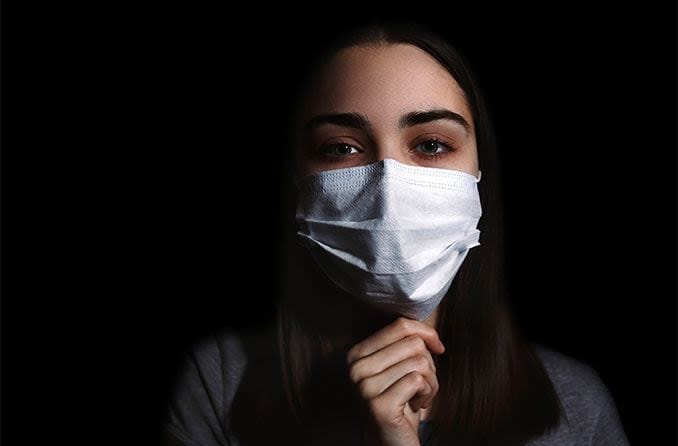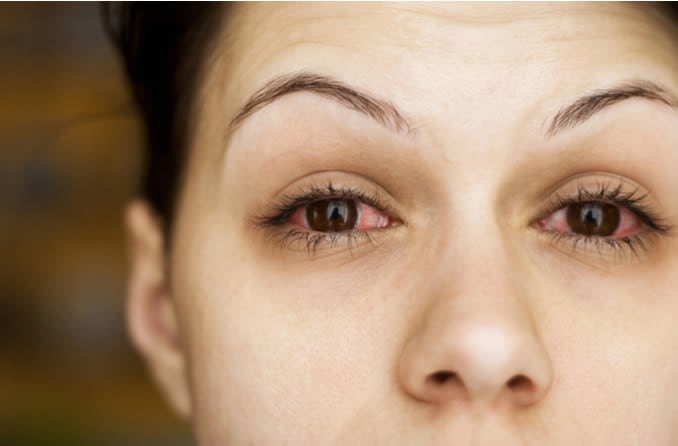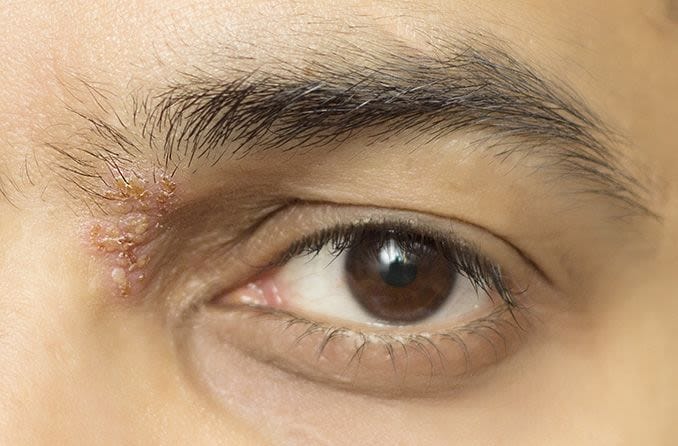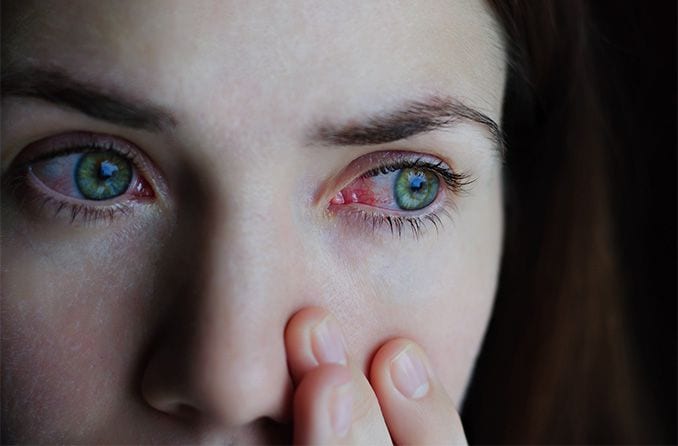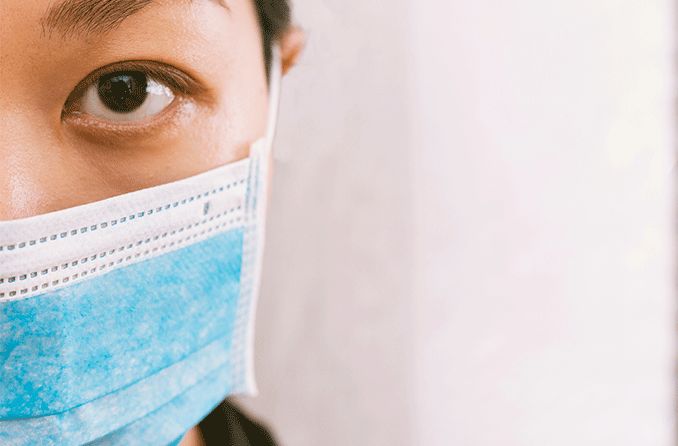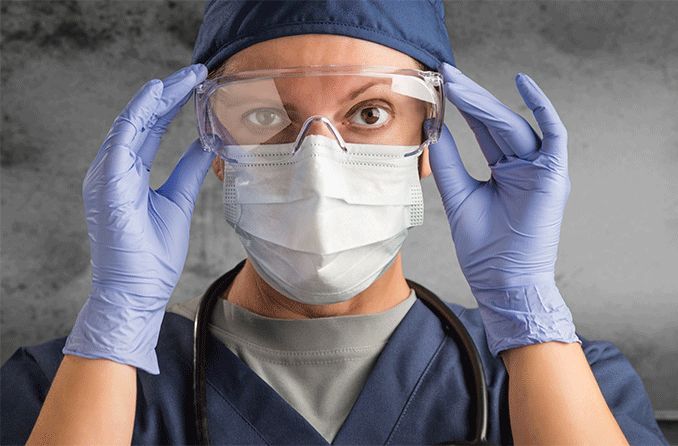1. Wash the lenses with soapy water
Before you put on your face mask, try this:
Wash your glasses or sunglasses lenses with soapy water.
Shake off the excess moisture.
Let the glasses air dry or gently dry them with a clean microfiber cloth.
Using this method, the lenses shouldn’t fog up once you put on the mask and glasses, according to one study.
Cleaning the lenses with soapy water leaves a thin film that reduces the “inherent surface tension” and prods the water molecules to form a transparent layer.
To avoid damaging your lenses, don't clean them with household products such as baby shampoo, toothpaste or shaving cream, says Dr. Joanna Slusky, the founder of Halsted Eye Boutique in Chicago.
SEE RELATED: How to properly sanitize your glasses and contacts
2. Seal the mask
A common trick employed by doctors involves sticking a piece of double-sided tape across the bridge of the nose before putting on a mask, says Shaun Veran, co-founder of OURA, whose wellness products include reusable face masks.
“If you place the double-sided tape between the inside of the mask and the bridge of your nose, it will create a better seal,” Veran says. “You can also place an additional piece of cellophane or masking tape over the mask as well.”
3. Make sure the mask fits well
A loose-fitting mask aims exhaled air directly toward your glasses, but a snugly fitting mask directs air out of the bottom or sides of the mask — away from your glasses.
Veran recommends certain features to help achieve a better fit:
“If the mask is well-fitted, it will dramatically help to prevent the amount of hot air that can reach the lenses,” Veran says.
“Make sure that your face mask has a snug fit around the nose bridge," he adds. "The more conformed the mask is around the bridge of your nose, the less of that hot air will end up hitting your lenses.”
If you’ve crafted your own cloth mask, create a seal around the nose by inserting a moldable item into the upper part of the mask, Slusky says. This could be a paper clip, pipe cleaner, twist tie or a folded piece of aluminum foil.
4. Adjust your glasses
If your glasses have nose pads, you can tweak the pads so that the frames sit slightly farther from your face, according to optician Shannen Knight, owner of A Sight for Sport Eyes in West Linn, Oregon.
“This will allow that hot air to escape instead of getting trapped between your face and the lenses of the glasses,” she says.
Knight cautions that altering the nose pads may slightly change your vision if you wear glasses with progressive lenses, or lenses with a strong prescription.
If that happens, you might need to hold your head at a different angle to compensate for the vision change, she says.
5. Try de-fogging products
Applying over-the-counter anti-fogging sprays, waxes and gels to your lenses before putting on your glasses can quickly disperse tiny fog droplets when you’re wearing a mask, Knight says.
“Some work better with different body chemistry, so you may need to try a few brands to see which one works best for you,” she says.
Knight warns against using anti-fogging products designed for cars or other purposes, as they might ruin your prescription lenses.
SEE RELATED: Anti-fog for glasses
6. Breathe downward
It might be awkward, but breathing downward can be a quick anti-fog fix, Slusky says. This sends more air away from your glasses.
How do you breathe downward? Hold your upper lip over your lower lip. Then blow air downward, as if you’re playing a flute.
7. Consider anti-fog lenses
This won’t fix your foggy-lens problem right away, but you might want to consider buying lenses with an anti-fog coating (such as Optifog lenses).
An anti-fog coating gives you a hassle-free answer to foggy lenses, regardless of whether the obstructed vision is triggered by a face mask or something else.
SEE RELATED: Face masks reduce coronavirus spread, but don't protect your eyes
Why do my glasses fog up in the first place?
Body heat and air flow lead to foggy lenses, Knight says.
When you’re wearing a face mask, you repeatedly breathe out warm air. This air then can sneak out of the top of your mask and steam up the lenses of your glasses. Of course, this can make it difficult to see.
According to the same study, a face mask directs much of the exhaled air upward.
The “misting” of lenses happens when warm water vapor from your breath lands on the cooler lenses, producing tiny droplets that scatter light and reduce the lenses’ ability to transmit contrast (when light colors remain light and dark colors remain dark).
“The droplets form because of the inherent surface tension between the water molecules,” the study’s authors said.
For the latest information on masks and mask guidelines, visit the CDC mask hub.
